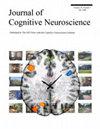在嘈杂教室中学习的神经生理学代价:生态虚拟现实研究
IF 3.1
3区 医学
Q2 NEUROSCIENCES
引用次数: 0
摘要
现实生活中的许多环境都可能非常嘈杂,因此很难理解人们所说的话。在这里,我们引入了一个新颖的视听虚拟现实实验平台,以研究背景噪声对在高度逼真的环境中处理连续语音的行为和神经生理学影响。我们的研究重点是对理解语音能力尤为重要的环境:教室。参与者(n = 32)体验了坐在虚拟现实教室里,并被告知要注意听虚拟老师讲课。试验要么是安静的,要么包含从教室窗外发出的背景建筑噪音。我们使用了两种逼真的噪音:连续的钻孔声和间歇的气锤声。除了行为结果,我们还测量了几项神经生理学指标,包括神经活动(脑电图)、眼球注视和皮肤传导(皮肤电反应)。我们的研究结果证实了背景噪声的有害影响。建筑噪音,尤其是间歇性噪音,与行为表现下降、对教师讲话的神经跟踪减少和皮肤电导增加有关,尽管它对α波段振荡或注视模式没有显著影响。这些结果表明了在噪声环境中学习的神经生理代价,并强调了时间动态在噪声语音感知中的作用。间歇性噪音比连续性噪音更具干扰性,这一发现支持了噪音中语音处理的 "习惯化 "假说,而非 "瞥见 "假说。这些结果还强调了提高神经科学研究的生态相关性、考虑现实刺激的声学、时间和语义特征以及现实生活环境的认知需求的重要性。本文章由计算机程序翻译,如有差异,请以英文原文为准。
The Neurophysiological Costs of Learning in a Noisy Classroom: An Ecological Virtual Reality Study
Many real-life situations can be extremely noisy, which makes it difficult to understand what people say. Here, we introduce a novel audiovisual virtual reality experimental platform to study the behavioral and neurophysiological consequences of background noise on processing continuous speech in highly realistic environments. We focus on a context where the ability to understand speech is particularly important: the classroom. Participants (n = 32) experienced sitting in a virtual reality classroom and were told to pay attention to a virtual teacher giving a lecture. Trials were either quiet or contained background construction noise, emitted from outside the classroom window. Two realistic types of noise were used: continuous drilling and intermittent air hammers. Alongside behavioral outcomes, we measured several neurophysiological metrics, including neural activity (EEG), eye-gaze and skin conductance (galvanic skin response). Our results confirm the detrimental effect of background noise. Construction noise, and particularly intermittent noise, was associated with reduced behavioral performance, reduced neural tracking of the teacher's speech and an increase in skin conductance, although it did not have a significant effect on alpha-band oscillations or eye-gaze patterns. These results demonstrate the neurophysiological costs of learning in noisy environments and emphasize the role of temporal dynamics in speech-in-noise perception. The finding that intermittent noise was more disruptive than continuous noise supports a “habituation” rather than “glimpsing” hypothesis of speech-in-noise processing. These results also underscore the importance of increasing the ecologically relevance of neuroscientific research and considering acoustic, temporal, and semantic features of realistic stimuli as well as the cognitive demands of real-life environments.
求助全文
通过发布文献求助,成功后即可免费获取论文全文。
去求助
来源期刊
CiteScore
5.30
自引率
3.10%
发文量
151
审稿时长
3-8 weeks
期刊介绍:
Journal of Cognitive Neuroscience investigates brain–behavior interaction and promotes lively interchange among the mind sciences.

 求助内容:
求助内容: 应助结果提醒方式:
应助结果提醒方式:


